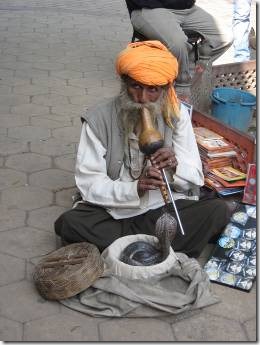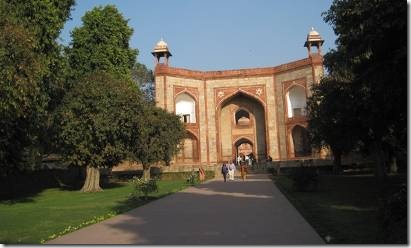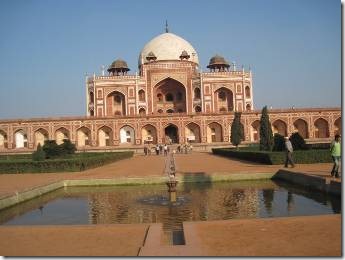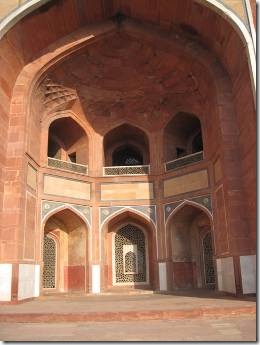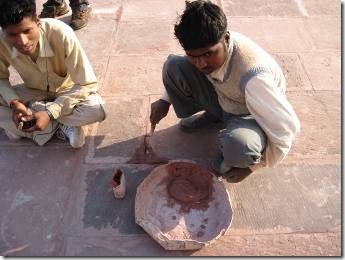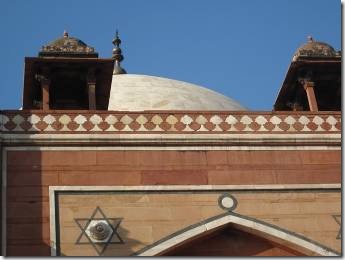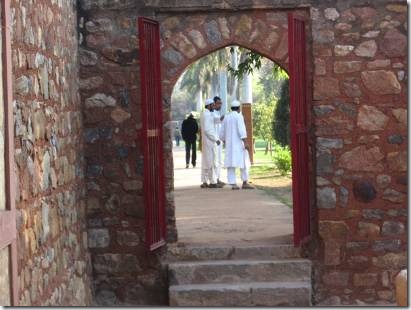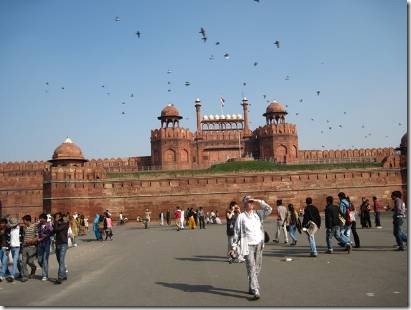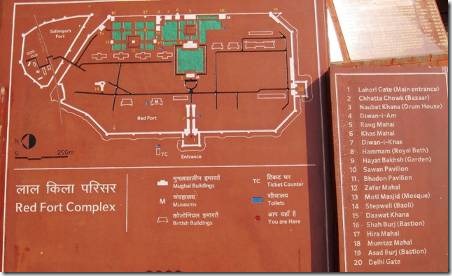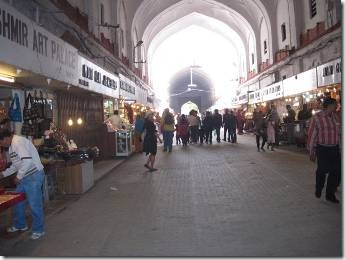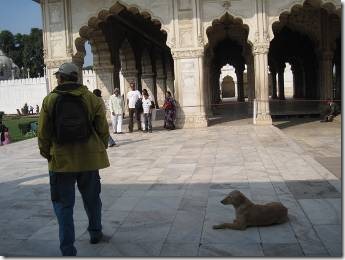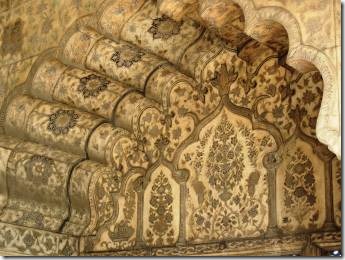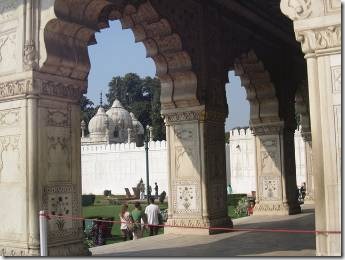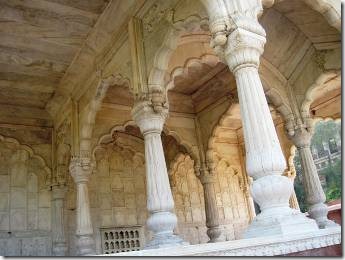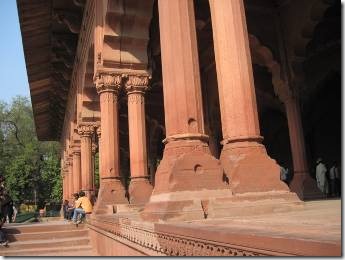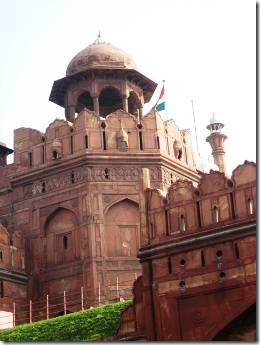We drove about 8 hours (including a lunch stop) from Delhi to Jaipur through tons of traffic and crazy driving with trucks and cars that say BLOW HORN so the noise is astounding. But it all works for them and our driver Sandeeb only once came close to giving the finger. We will spend 3 days in the area and then move on to Agra to see the Taj Mahal. Then it’s back to Delhi, on to Haridwar with a side trip to Rishikeh and then back to Delhi. We’ll return to Cochin on the 26th.
On a very sad note, an American yacht with 4 Americans was taken hostage by the Somalie pirates today. The yacht Quest was tied across from us at the Cochin marina and we waved them off as they started on their passage to the Red Sea. As much as we chose not to make the passage, it was a horrible shock to learn that a yacht was actually taken. We hope this is resolved as quickly as possible and our thoughts go to their families and friends.
Ru
India # 1
Snake charmers, camels, elephants, tombs, forts and a visit to the Delhi synagogue. We like what we have seen so far of northern India. Much of it is reminiscent of industrializing China with smog and congested roads and horrible traffic jams. But, ‘don’t worry, be happy” as our guide Sandeep says. And we are being happy.
Snake charmer?
He was sitting outside a “tourist restaurant” next to the souvenir sellers. We knew we’d have to pay, but so what so Linda and I took photos and he prodded the snake to face us which I didn’t exactly need. I didn’t have any small bills so Linda told him the 20 rupees was from both of us. The snake barely came out of the basket and I don’t remember any great music coming from the flute; but he quickly let us know that I needed to give him money too. I had a 5 rupee bill so that was it. We told the tour operator who we had started working with that the restaurant was far too full of tourists, the food was bland and twice the price we usually paid for half the food. Next day we ate where the locals ate. The women at the next table were in India because their husbands were there. One woman was from Staten Island, looked like Tracy Ullman and had a nose decoration. Her husband worked for the World Bank and this was a 3 year assignment. The other woman was Indian by birth but hadn’t grown up in India. Her husband had come to work for an Indian company. The restaurant was jam packed, noisy and had good cheap food. Our kind of place. There was a line waiting to get in and we decided it was the equivalent to a New York deli.
Humayun’s Tomb
Humayun the Moghul Emperors (Muslim ruler of India) in the year 1555 AD. Six months after retaking Delhi he fell from the stairs of his library and died. His tomb was built by his widow around 1565 AD. “One of the greatest examples of architecture in India, Humayun’s tomb is known for influencing the structure of the Taj Mahal as well.” Delhi, A Travel Guide. It is a UNESCO Heritage Site; it is protected under the rules of the Archaeology Survey of India and is maintained by the Aga Khan Trust.
No more fountains or gardens.
Like the woman in Venice who said it was almost as good as the casino in Las Vegas, my reaction the tomb is that it reminded me of the government building in Johor newly constructed with this architecture with more gardens and actual fountains.
Inside the tomb
Repair men
Some of the domes showing how Muslim and Jews share the Star of David.
Other tourists
The Red Fort
“The Red Fort is to Delhi what the Colosseum is to Rome or the Acropolis is to Athens: it is the single most famous monument in the city. It represents the climax of more than 600 years of experimentation in palace building by Indo-Islamic architects”. City of Djinns William Dalrymple Lonely Planet said it would take at least 2 hours to see the Red Fort. We all managed it in under and hour. Twice men asked if we wanted to hire them as guides and that certainly would have made it more interesting. But though the price was right we have such a hard time with the Indian accent that we took a pass. Also, after the Great Wall we weren’t wowed by the size and scale of the Red Fort after the damage done by the British who drained the moats and fountain and pulled up the flower gardens and planted grass.
A map of the fort area.
Between the outer gate and the inner fort was a tourist bazaar where Dalrymple points out one runs the gauntlet of salesmen and their tourist wares.
Not just a fort, but palaces for the emperor’s family.
We also kept thinking about the Forbidden City and this paled in comparison. Not sure what that says about the Red Fort or about us. The dog was very sweet. There are dogs all over Delhi and they are all sweet and smile at you if you say hello and give it a pat on the head. Again, Dalrymple has this to say, “Today, the inner enclosure should be the climax of the fort, but the sight of it produces only a sensation of anticlimax.”
Decorated archways.
There were several building in the compound for the emperor, his wives, children, etc.
More archways.
An outer wall.
The very outer walls.
What has impressed us so far other than just the vibrancy of Delhi itself, the Judah Hyam Synagogue and Ezekiel Isaac Malekar its Honorary Secretary, leader of services, warm weclomer of foreign visitors and great ambassador of the Jewish community of Delhi. I had Googled synagogue and Delhi and found information for the synagogue. It was a bit tricky for our guide Sandeep to actually find since he knows monuments etc, but not actual streets per se. Sandeep never gave up; we found the synagogue, met Mr. Malekar and were invited to services and to hear the former head of the Indian Air Force lecture on the commonality of all religions. (Actually I thought Mr. Malekar said he was to lecture on the history of Jews in India.) We had a wonderful time meeting priests, imams, visitors and members of the local Jewish community. That in the next email.

